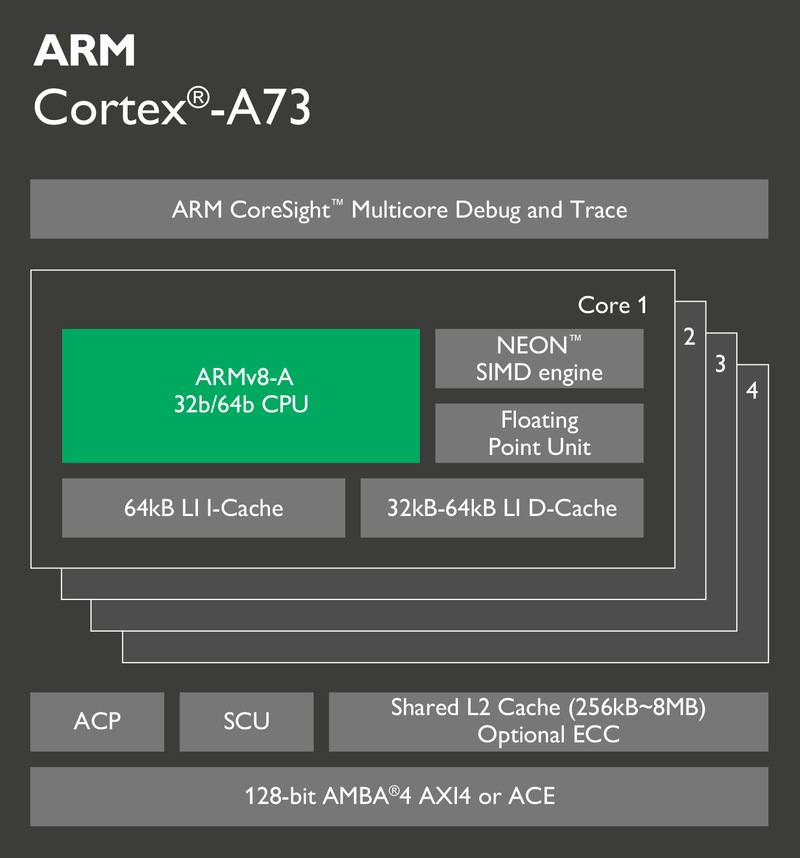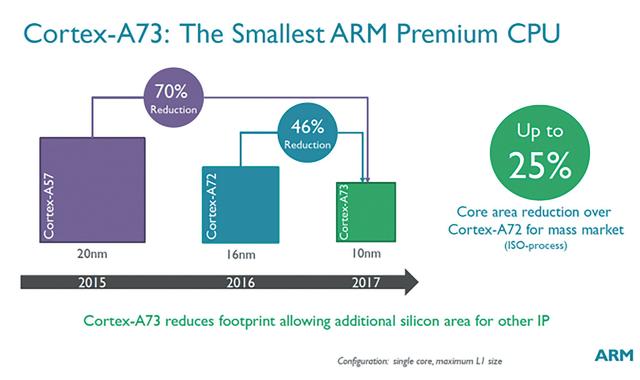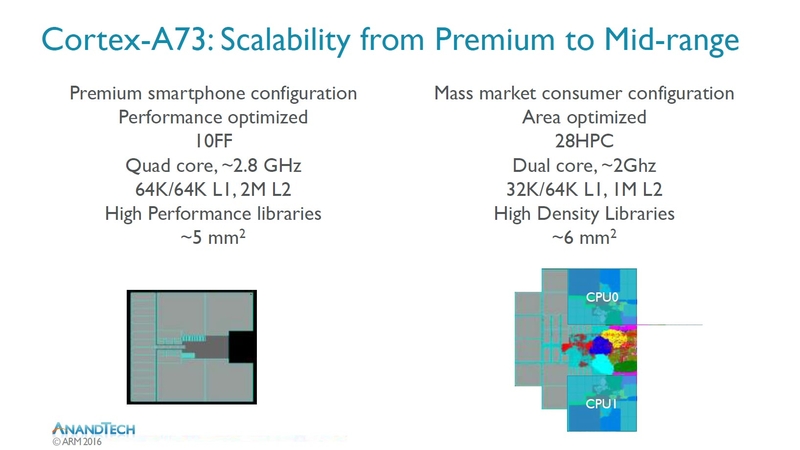IT168 evaluation For today's smart phones, the processor is as important as the brain, it directs the phone to accurately run a variety of instructions, and with the progress of the processor algorithm, this "brain" can give mobile phone Bring more and more complicated features. For the processor, the architecture is like a neural circuit in the brain and becomes the basis for the performance of the processor. In recent years, along with the development of technologies such as AR and VR, the mobile phone has gradually changed from the previous mobile terminal to the same carrier as the remote control. This also imposes higher requirements on the mobile phone processor, and it can be seen that The progress of the processor has played an almost decisive role in the current environment for mobile phones. Therefore, we will briefly introduce the new processor architecture released by ARM in the middle of the year: Cortex-A73.

If you have some understanding of the mobile phone processor, I believe that ARM Cortex-A series will never be unfamiliar, Cortex-A architecture has many members. Currently in the market, most of the processors mainly use the three architectures A53, A57, and A72. Among them, the A53 main power consumption ratio is mostly used in thousands of processors, such as MediaTek X10, or used in conjunction with the main performance. Big-core matches, such as Xiao Long 652. The A53 and A72, on the other hand, are high-performance and bear the processing of complex data on high-end processors. Only from the naming point of view, the A53/57/72 can basically be seen as a performance increase in numerical order. This arrangement, the latest A73 should be the most powerful architecture in the current ARM public version.

A73 architecture diagram
Interestingly, from the perspective of the product line, the Cortex-A57 and A72 architectures are from ARM's Austin team in Texas, and the A53 and A73 are designed by ARM's team in Europe. Therefore, the A73 and A72 are actually just one number. Poor, but it is a product of two teams. Or the difference between the crude nature of the Texas people and the more literary atmosphere in Europe has made the processor developed by them have obvious differences. We all know that the performance of smart phone processors is growing at a fast pace, and the resulting heat and power consumption problems have not been well solved. Before the failure of Xiaolong 810 proved that simply pursuing performance did not improve people's experience. Therefore, ARM also realized that for mobile phone processors, balance performance and power consumption can achieve better results.
From the ARM official description of the A73 architecture: Cortex-A73 still using full-size ARMv8-A architecture, up to 2.8GHz frequency, can use 10nm, 14/16nm process, and according to ARM official introduction, when the A73 uses 10nm process , Compared with the previous generation of Anm 16nm technology, performance has a 30% increase, and have better optimization for AR / VR. The A73 is the smallest core processor in the ARMv8-A architecture, with an area of ​​0.65mm per core and continues to support the big.LITTLE architecture. From the official description, we can extract the following features of the A73:
1, A73 can support up to 2.8GHz frequency, performance can be increased by 30% compared to A72;

A73 dual emission L/S
Each generation of processors is promoted for performance purposes. Of course, the A73 is no exception. The A73 main frequency can support up to 2.8GHz, compared with the 16nm A72 in the 10nm process, performance increased by 30%. In terms of memory, the A73 uses dual-emission L/S units and is smaller than the triple-emission of the A72 in launch width. However, since the 11-core core pipeline depth of the A73 processor is more compact than that of the A75 core pipeline, the launch width is not limited. There is no decisive influence on the performance of the A73. However, since the A73's L1 cache is increased from 48kB to 64kB, the L2 cache is increased from the maximum 2MB of the A72 to 8MB, and an independent readout device is provided for the L1 and L2 caches, making the A73 accessible to the theory. The maximum bandwidth value. Thanks to various optimizations, the A73 has been improved in terms of extreme performance compared to the A72.
2. A73 uses 10nm process; power consumption can be reduced by up to 30%;

A73 adopts 10nm architecture, which can improve performance by 25%
In general, more advanced processes can improve processor performance. For current processors, excessively high limit performance not only limits the battery life of the mobile phone, but also has a great influence on the heat dissipation (stability limit output) of the processor itself. The A73 uses a 10nm process to bring more stable extreme performance. The A73 can run stably for a longer period of time under maximum performance, unlike the previous A57, which can only do "5 seconds true men." This has a huge impact on the actual use of smart phones, especially on large game experiences.
3, using ARMv8-A kernel, each core area under 0.65mm:

The A73's core area is greatly reduced
At present, the highly integrated smart phones, the interior space is almost costly, especially for the motherboard part, the extremely complex electrical structure makes the choice of mobile phone processor more than enough. The A73 is called the smallest high-end core in the current processor. Each core has an area under 0.65mm, which is 43% smaller than the area of ​​1.15mm2 on the A72. According to ARM's data, the A73 uses a 10nm FinFET process. With a 2.8GHz quad core, the core area is only 5mm2. Generally speaking, the manufacturing cost of a mobile phone processor is proportional to the area size, the higher the area is, the higher the cost is, and the smaller processor area brings a smaller cost, which may have the effect on the pattern of future low-end mobile phone processors. The role of promotion.
Summary: A73 has been released for some time. With the Hais Kirin 960, MediaTek X30, and other processors that may use the A73 architecture, it has been gradually discussed about the A73. There is no doubt that ARM has long been no longer pursuing the high performance of processors. Instead, it prioritizes other aspects such as power consumption that are more practical, and then re-optimizes the architecture for the characteristics of actual use. Although we haven't yet got a real machine with the A73 architecture to test, we can see from the official introduction of ARM that the A73 architecture may be seen in many flagship or even midrange processors next year. Actual performance, we will wait and see.